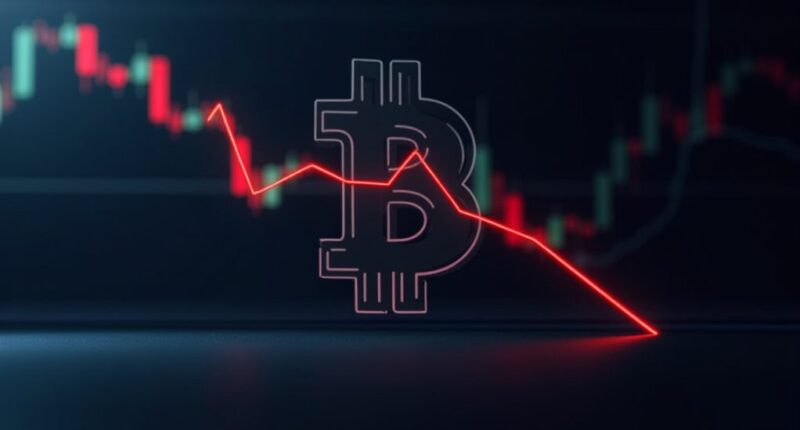In an unusual market development, Bitcoin futures contracts on Deribit, the world’s leading crypto options exchange, have slipped below the spot price ahead of Friday’s expiration – a phenomenon that typically signals bearish sentiment among traders.
This pricing anomaly, known as backwardation, marks the first time in over a year that near-tenor yields have dipped into negative territory. Think of it as the crypto market’s version of opposite day – futures contracts, which normally trade at a premium due to carrying costs, are now cheaper than buying Bitcoin outright. Sophisticated traders frequently utilize synthetic strategies to capitalize on these market inefficiencies.
Backwardation flips the crypto script – Bitcoin futures now trade below spot prices, defying the market’s typical premium structure.
The discount reflects a broader pessimism in the cryptocurrency market, with traders apparently betting on potential price declines. This sentiment is echoed across other major exchanges, including CME, where institutional activity remains especially subdued and futures prices are trading well below the much-anticipated $100,000 mark. This bearish trend mirrors the market reaction when CME futures trading first launched in December 2017.
For market participants, this development has thrown traditional trading strategies into disarray. The once-reliable cash-and-carry trades, which profit from the difference between spot and futures prices, have largely evaporated. Instead, traders are exploring reverse strategies and reassessing their risk management approaches. The increasing complexity of global compliance requirements has further complicated trading decisions across jurisdictions.
Technical indicators aren’t painting a rosier picture either. Breaking of key support levels in futures markets, combined with changes in open interest and trading volumes, suggests the potential for further downside. It’s like watching a game of financial limbo – how low can it go?
The current market structure is being shaped by a complex interplay of factors, including recent regulatory developments, shifting macroeconomic conditions, and evolving interest rate expectations. The correlation between crypto derivatives and traditional financial markets continues to influence trading patterns.
For Bitcoin holders and traders alike, this unusual market condition serves as a reminder of cryptocurrency’s volatile nature. While historical patterns suggest such periods of backwardation are typically temporary, they nevertheless provide valuable insights into market sentiment and institutional appetite for crypto exposure.
The question remains whether this is a temporary blip or a signal of more fundamental shifts in the market’s structure.









